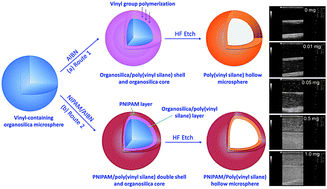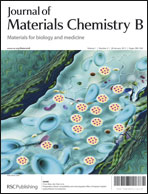A strategy for fabrication of uniform double-shell hollow microspheres as effective acoustic echo imaging contrast agents through a new polymer-backbone-transition method†
Abstract
We present a novel self-templating strategy for directly fabricating monodisperse hollow


 Please wait while we load your content...
Please wait while we load your content...